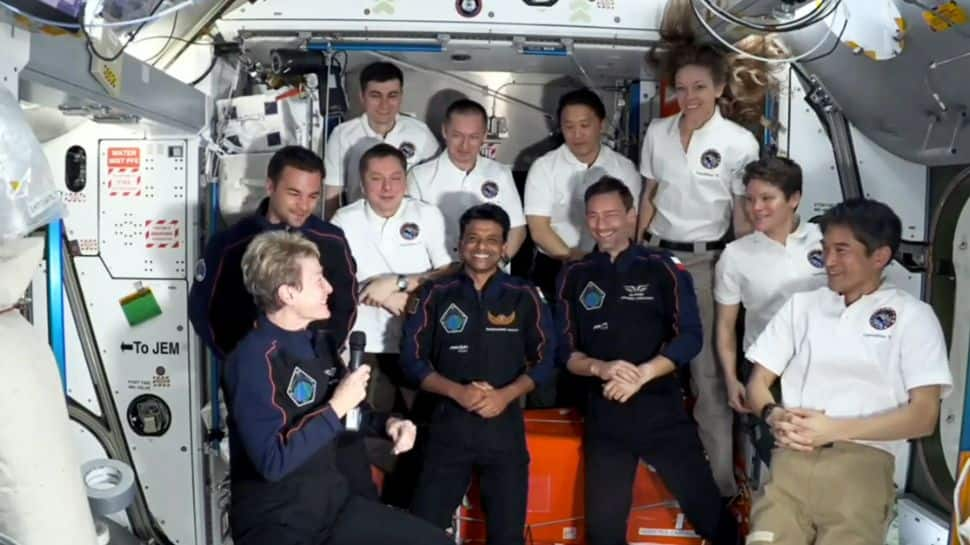“Privilege To Be Among The Few Who Have …,” Says Shubhanshu Shukla | India News

Indian Air Force Group Captain Shubhanshu Shukla on Thursday said that it is a privilege to join the select few who have seen the planet from space.
“The minute I entered the International Space Station and met this crew, you just made me feel so welcome, as if you literally opened your doors, like your house doors, for us. It’s a privilege to be among the few who have had the chance to see Earth from this vantage point,” HT reported, quoting Shukla.
Shukla said he looks forward to an exciting two weeks of scientific collaboration and discovery at the International Space Station.
“I think this is fantastic, this is wonderful and I am very confident that the next 14 days are going to be amazing, advancing science and research, and working together,” HT reported, quoting Shukla.
Earlier today, Indian Air Force Group Captain Shubhanshu Shukla and his fellow three Axiom Mission 4 (Ax-4) crew members formally entered the International Space Station (ISS).
Group Captain Shubhanshu Shukla’s visit to the International Space Station marks him as the second Indian to travel to space, following in the footsteps of cosmonaut Rakesh Sharma, who made his historic flight in 1984. The mission holds special significance as Shukla is the first Indian to visit the ISS and the first to serve as a pilot on a commercial spacecraft as part of an operational crew.
The Axiom-4 mission team, along with Shukl,a includes Commander Peggy Whitson from the United States, a veteran NASA astronaut; Slavoj Uznański-Wisniewski, only the second Pole to take part in a space mission since 1978; and Tibor Kapu, the second Hungarian astronaut to travel to space after a gap of 45 years. The international crew launched from NASA’s Kennedy Space Center in Florida on Wednesday.
Axiom Space Mission 4 is a joint mission led by NASA, Axiom Space, SpaceX, ISRO, and the European Space Agency (ESA).






